All posts by Valerie Ringland
Is it worth decolonizing my Filipino spirituality and mentality?
Blog by Ellis Bien Ilas
“The Filipinos of today are the happiest people I know. Why revisit the past and why does it matter now?” She told me with an unsure smile. I only just met her for the first time five minutes ago and somehow, our conversation took an unexpected dip into the stories rarely told territory.
When two strangers realise they’re both Pinoys because curiosity has prompted either of them to ask “Are you Filipino?”, there’s typically a surge of excitement when it’s a match. Usually, I reply by either talking about how long since I’ve been back in the Philippines or how much fun I had in my most recent trip. In this case, I had just returned from a trip to my homeland after a 5 year drought.
I casually recounted that while my trip was short and sweet, I was also on a mission to discover some local books on Filipino History. A quest that took me at least 9 book stores until a kind soul directed me to a shelf filled of said books on the second last day of my trip. It was a welcome relief after being repeatedly directed to the Filipino cookbooks section in my prior search.
Back to our unplanned discourse, I couldn’t possibly not share a tidbit or two about how aghast I was at what I’ve learned so far. Especially how our distant relatives have been wrecklessly jostled about from the Spanish to the Americans in deeply degrading (and staged) circumstances.
“…why does it matter now?” she recoiled back.

The sound of my name being called broke my reverie as I mulled her question. I was in an animal shelter and fortunately, it was my time in the queue to be attended to.
Being a Filipino-Australian who has been living in Australia since I was eight years old, I have also felt a gnawing inkling that now would be a great time in my life to rediscover my Filipino roots.
How does one start though? Scholarly articles and the very limited Filipino history ebooks on Amazon points to the fact that the colonial legacy of the Philippine’s past has left deep scars in the Filipino psyche, including “internalised oppression, self-hatred and colonial mentality” (David & Okazaki, 2006).
Hang on. Colonial Mentality? What does that actually mean?
Colonial Mentality
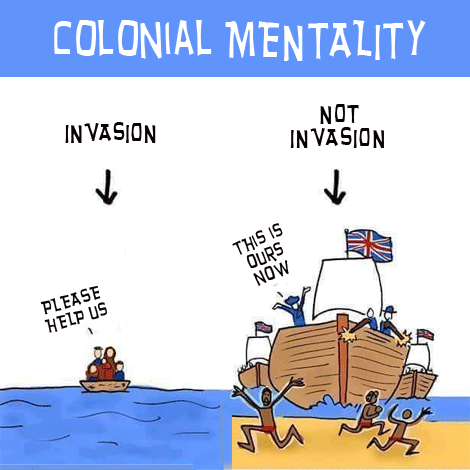 According to Nadal et al. (2016), colonial mentality refers to the internalisation of colonial values, beliefs and practices that devalue Filipino culture, language and identity. This can manifest as embarassment or feelings of inferiority over Filipino tradition and practices.
According to Nadal et al. (2016), colonial mentality refers to the internalisation of colonial values, beliefs and practices that devalue Filipino culture, language and identity. This can manifest as embarassment or feelings of inferiority over Filipino tradition and practices.
I recall when I first moved here in Sydney, Australia on several occassions, how several of my Filipino peers more often than not, proclaimed they were Fillipino-Spanish (even if that was 1/32th in bloodline). (Image from here)
“It just makes me sound more interesting you know. I’m not just another flip (Inner West Sydney slang for Filipino back in that time) who’s also a fob (fresh off the boat)”, I vividly recall an acquaintance disclosing.
David and Okazaki (2006, p.335) defines colonial mentality as “the conscious or unconscious acceptance of the belief that traits, values and practices associated with the coloniser are inherently superior to those associated with the colonised”.
To dive a little deeper, the authors developed the Colonial Mentality Scale to measure colonial mentality, which includes the following dimensions:
1. Belief in the superiority of Western physical features (e.g., light skin, straight hair)
2. Belief in the superiority of Western cultural values (e.g., individualism, direct communication)
3. Belief in the superiority of Western education and credentials
4. Belief in the superiority of Western technology and innovation
5. Belief in the superiority of Western religion and morality
The authors found that colonial mentality was significantly associated with lower self-esteem, higher acculturative stress, and lower levels of Filipino cultural values and practices among Filipino Americans.
So basically, colonial mentality has negative consequences for our mental health and well-being.
Decolonizing the Filipino Spirituality
Mention the word spirit or espiritu to a Filipino and you’ll either be discussing about perceived ghost sightings/apparitions (which stems from one of the Philippines’ pre-colonial belief systems referred to as animism — the belief that objects, places or creatures all possess a distinct spiritual essence) or, you’d be discussing the divine power of the Holy Spirit (through the lens of the Romantic Catholic faith).
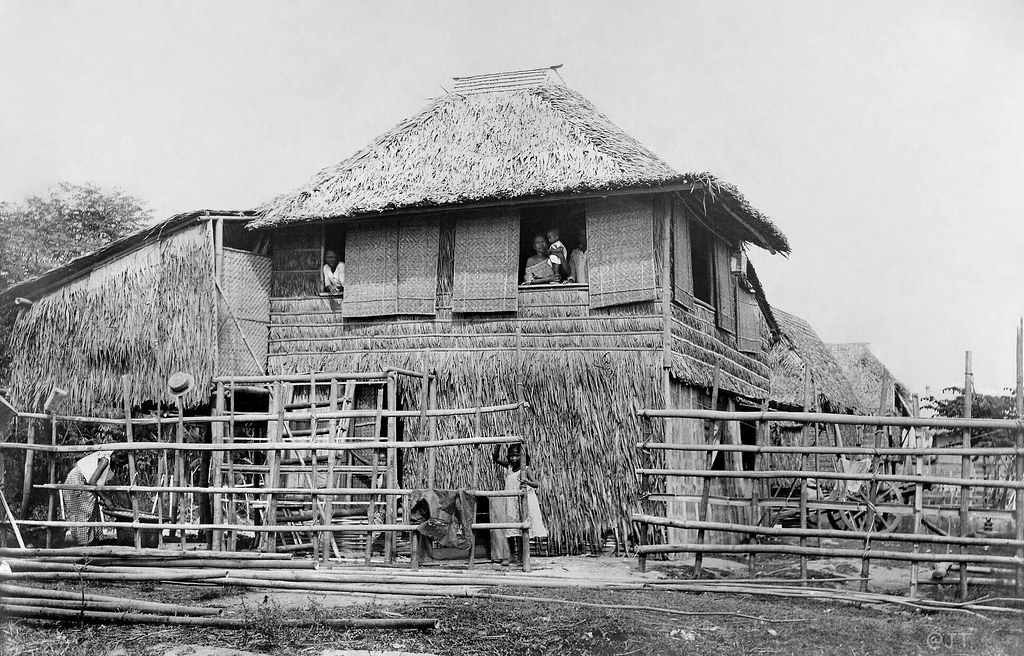 Constantino (1975) argued that Spanish colonialism and Catholicism had a profound impact on the Philippines, including the suppression of indigenous spirituality and cultural practices (which were largely based on animism), leading to the creation of a colonial and clerical elite. It also strongly impacted Filipino values and beliefs, how Filipino society is organised and the perpetuation of patriarchal and authoritarian structures of power, gender inequality and resistance to social and political change. (Image of pre-colonial Philippines house from here)
Constantino (1975) argued that Spanish colonialism and Catholicism had a profound impact on the Philippines, including the suppression of indigenous spirituality and cultural practices (which were largely based on animism), leading to the creation of a colonial and clerical elite. It also strongly impacted Filipino values and beliefs, how Filipino society is organised and the perpetuation of patriarchal and authoritarian structures of power, gender inequality and resistance to social and political change. (Image of pre-colonial Philippines house from here)
Let’s look at the typical Filipino family unit. Respecting and obeying Filipino parents and elders are deeply ingrained value and practice that is often associated with the way Catholicism has spread in the Philippines. These values and practices are based on the belief that Filipino parents and elders have the ultimate authority and control over their children and younger family members, and that their decisions and actions should not be questioned or challenged.
However, this value and practice can also perpetuate toxic and abusive dynamics in the Filipino family unit, particularly in relation to the reinforcement of authoritarian structures of power. For example, Filipino parents and elders may use their authority and control to enforce strict and oppressive rules and expectations, such as the control of their children’s education, career, and relationships; the restriction of their freedom and autonomy and the perpetuation of gender stereotypes and roles.
These dynamics can lead to unknowingly abusing that power, such as the emotional, physical, and sexual abuse of children and younger family members; the neglect and marginalization of their needs and rights, and the undermining of their agency and participation.
In light of the above, I’m not saying that Catholicism was all doom and gloom. I acknowledge that it also helped develop the Philippines through education and healthcare, as well as a sense of community and solidarity (which appears to still hold strongly today). However, it has caused issues still pervasive today. Problems that manifest in everyday life and I would imagine, most Filipino family units. Problems that I’ve seen myself and maybe, you have too. It’s possible that you have also considered, in the grand scheme of things, how did we get here and what can I do about it?
So… is it worth decolonizing my Filipino spirituality and mentality?
Considering the complex, multifaceted and evolving nature of the process of decolonisation, I don’t think I can reach a point and say, yeah, I’ve become decolonized now. Far from it.
But I am interested in improving my mental health and well-being, and this aspect of decolinization is a part of that process.
Despite this being in the making in the past few years, I’ve really only just taken my first few steps. My goal is to share this ever-evolving journey with others who may have had this spark lit within them. I’m curious to hear from you.
References
Constantino, R., & Constantino, L. R. (1975). The Philippines: A past revisited (Vol. 1). Quezon City: Renato Constantino.
David, E. J. R., & Okazaki, S. (2006). Colonial mentality: a review and recommendation for Filipino American psychology. Cultural Diversity and Ethnic Minority Psychology, 12(1), 1.
Nadal, K. L. (2020). Filipino American psychology: A handbook of theory, research, and clinical practice. John Wiley & Sons.
![]() If you value this content, please engage in reciprocity by living, sharing and giving.
If you value this content, please engage in reciprocity by living, sharing and giving.
Navigating Existential Judgment
Blog by Valerie
Lately some protracted conflicts have come to the surface in my life at a macro level in the world, and at a micro level in my daily life. I have been praying quite a lot since the war in Ukraine broke out, where my Jewish-Sumerian ancestors spent many generations living, and more recently about the war in the Middle East. It seems to me like there is existential war and rejection going on based in judgment, where one or more parties to a conflict feel they are fighting to exist in the minds and hearts of the other.
I find existential judgement incredibly dangerous and damaging and see it as the root of genocide. It feels to me like a hand rejecting its own finger. If we believe in a Creator with wisdom our human minds cannot comprehend, how can we put ourselves in the position of judging what the Creator brought into being? And to say another is allowed to exist elsewhere (NIMBY) is still judgmental, for if we force another to leave their home and live on different lands, we change their and our identities by disconnecting people from their earthly homes and playing the roles of victims and offenders.
On a micro level I’m seeing this thinking play out in some righteous social justice warrior crusades around me. I find the concept of ‘rights’ to be violent, though it has obvious practical value to create baseline standards for society. If we didn’t existentially judge certain struggles and behaviours as deeming people unworthy of housing or health care or food, then rights would simply represent social baselines we collectively agreed upon as minimum standards of care for all of us humans living here. But if a single mother can’t afford housing, or a man with mental illness isn’t at retirement age but can’t hold down a job, we don’t collectively agree how (or sometimes even if) to support their survival. Rights then get used in a forceful way to push a majority social group’s minimum standard of support onto the collective, and thus they often need to be en-forced. And when we are judged and caught up in the rights battles we feel, rightly so, like we are fighting for our survival. (See survival strategies blog)
I agree with Jungian scientist Fred Gustafson that the Western mind is “having a massive collective nervous breakdown” and is going to “war to determine whose anthropocentric [world]view is most valid [while] the earth and all its inhabitants [] suffer.”[1] I have not found sufficient solace for survival in the Western world alone.
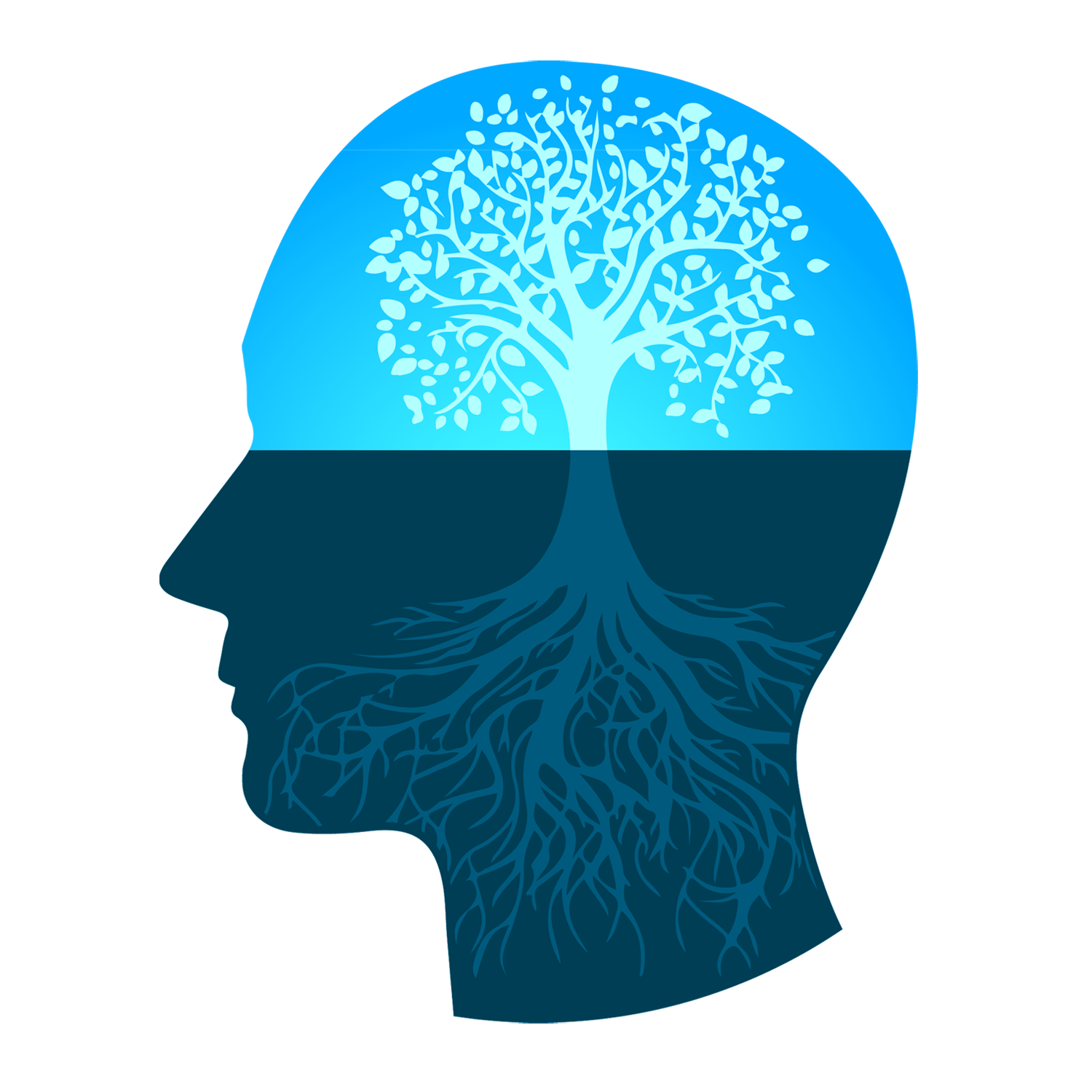 For me it has been vital to live in two worlds: (1) a social reality that is based on a Western worldview, and (2) an earth-based reality based on an Indigenous worldview. When I’m caught up in a survival struggle in the Western world that’s terrifyingly real, and I’m feeling rejected and judged and shamed and angry, I can spiritually connect with the knowing from the Land and my ancestors that I’m not only allowed to exist but that I am wanted. This powerful medicine is all I have found that alleviates my existential wounds. Without it I feel like I would not still be here on this Earth, as my roots would have rotted and not been able to hold up the rest of my inner tree of life. (Image from here)
For me it has been vital to live in two worlds: (1) a social reality that is based on a Western worldview, and (2) an earth-based reality based on an Indigenous worldview. When I’m caught up in a survival struggle in the Western world that’s terrifyingly real, and I’m feeling rejected and judged and shamed and angry, I can spiritually connect with the knowing from the Land and my ancestors that I’m not only allowed to exist but that I am wanted. This powerful medicine is all I have found that alleviates my existential wounds. Without it I feel like I would not still be here on this Earth, as my roots would have rotted and not been able to hold up the rest of my inner tree of life. (Image from here)
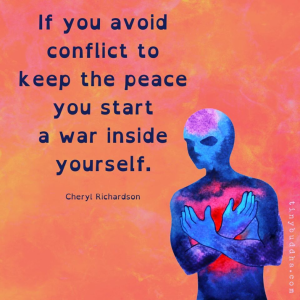
If you’re also feeling some pain and heaviness about existential judgement and its impact, here are a few things that help me keep my spirits strong:
- Grieving is a way I like to express angry energy to avoid getting overwhelmed by righteousness and gain clarity which fights, if any, feel right for me to engage in, and what that means practically. You may prefer to yell and scream or throw things or punch a bag instead, so however you express anger to avoid it overwhelming you is helpful.
- Connecting with the land and ancestors where I am offers me powerful healing. I may give offerings as simple as feeding a bird or picking up rubbish, or as profound as a placenta burial or smoking/smudging ceremony. I may also cultivate a sit spot on the land, walk barefoot, and tend a tree altar. There are so many more ways to connect with the land where you live, these are but a few. The reverence we bring to the action we choose matters more, I think, than exactly what we do.
- Letting go of black-and-white, objective, judgmental thinking is something I am very fierce with myself about. Humility is an important value to me, so I ensure that even when I feel certain or highly confident about something that I carry a little bit of doubt. For example, I feel highly confident that child sex abuse (link) is a damaging act that is wrong to do. Yet my intense journey of seeking to heal that wound has brought me so much wisdom and peace. Spiritual gifts often thrive in grey, paradoxical spaces.
 Altering my consciousness is another survival tool I use daily, primarily through embodied meditations and drum journeys. I do it to heal trauma, connect with ancestors and other spiritual guidance, and seek tools for every day survival such as deeper spaces of compassion or peace. However you are able to sink deeper than your everyday ‘known’ and familiar thought loops can bring you some healing. I do find, however, that embodied practices (such as using sound or dance or breath techniques) are more powerful than mind-based practices (such as meditating through your third eye or simply watching your thoughts).
Altering my consciousness is another survival tool I use daily, primarily through embodied meditations and drum journeys. I do it to heal trauma, connect with ancestors and other spiritual guidance, and seek tools for every day survival such as deeper spaces of compassion or peace. However you are able to sink deeper than your everyday ‘known’ and familiar thought loops can bring you some healing. I do find, however, that embodied practices (such as using sound or dance or breath techniques) are more powerful than mind-based practices (such as meditating through your third eye or simply watching your thoughts).
Thank you for reading this, and may your life be enriched (and even saved) by living in both worlds, as mine is.
[1] Gustafson, F. (1997). Dancing between two worlds: Jung and the Native American soul. Mahwah, NJ: Paulist Press.
![]() If you value this content, please engage in reciprocity by living, sharing and giving.
If you value this content, please engage in reciprocity by living, sharing and giving.
Tattoos & Tradition
Blog by Valerie
This blog idea came to me a while ago when I read an article about the revival of Deq, a traditional tattooing technique in Kurdish and some other Arabic and Northern African cultures. I had always been told you can’t be buried in a Jewish cemetery with a tattoo, and something about this tradition resonated as more ancient and true to my Sumerian roots. The article explained that Deq is a form of worship, with tattooing the skin believed to also engrave a person’s soul. It is a women’s tradition that uses breast milk and another substance (such as soot) to create the ink. (Image from Wikipedia)
Deq differs greatly from modern conceptions of tattooing. While today individuals often get tattoos for decoration or to memorialise events, people, or beliefs, deq is traditionally done to request abundance, protection, blessings, or fertility from God.
Spiritual protection is a common reason for tattooing in Indigenous science. According to Western scientist Lars Krutak of the Smithsonian, traditional cultural tattooing is done for the following reasons:
- Adornment
- Identity
- Social status
- Therapeutic/Health
- Spiritual protection/Animal mimicry
(Krutak, L. (2015). The cultural heritage of tattooing: a brief history. In Tattooed skin and health (Vol. 48, pp. 1-5). Karger Publishers.) Most of these we can relate to today, though you may be wondering what therapeutic or health tattoos are. Among our ancient ancestors are tattooed ceramic figures that are over 6000 years old found in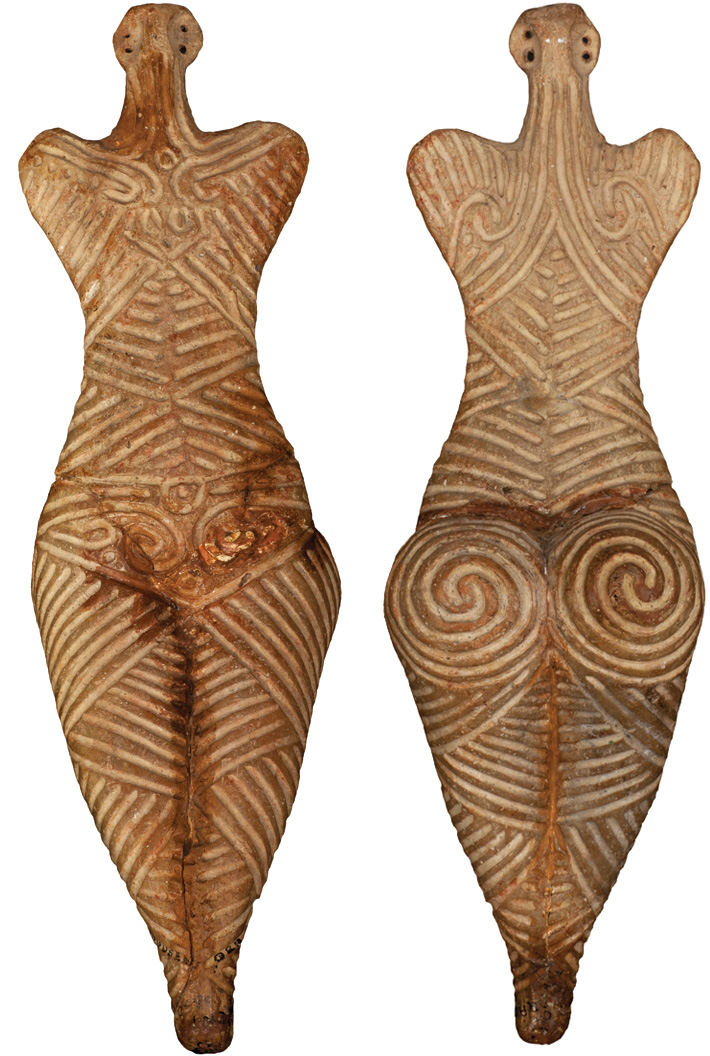 modern day Ukraine and Romania, and a 5000 year old mummy found preserved in ice in the Italian Alps who appears to have therapeutic tattoos in places on his body that look similar to a practice in traditional Asian cultural medicines. Such tattoos tend to be at joints and in the lower back. Tattooed mummies have also been found from Egypt to Siberia to Peru, and tattooed earthenwares of human or spirit figures have been found across the world from ancient Mississippi to Japan to the Philippines.
modern day Ukraine and Romania, and a 5000 year old mummy found preserved in ice in the Italian Alps who appears to have therapeutic tattoos in places on his body that look similar to a practice in traditional Asian cultural medicines. Such tattoos tend to be at joints and in the lower back. Tattooed mummies have also been found from Egypt to Siberia to Peru, and tattooed earthenwares of human or spirit figures have been found across the world from ancient Mississippi to Japan to the Philippines.
 The word ‘tattoo’ was brought into English from James Cook’s 1770s journey to New Zealand and Tahiti, and supposedly inspired Western sailors to start a tradition of tattooing themselves to remember where they had traveled and people they missed at home. (Image of a Ta`avaha (headdress) with tattoos, Marquesas Islands, 1800s, via Te Papa from here) Though modern Polynesian tattoos differ by island and culture, generally tattoos are seen as a form of spiritual protection, cultural status symbols displaying rites of passage, and signifiers of ancestral lineage. Where tattoos are on the body, and what symbols and motifs are used, are also important as they link people to their Creation story:
The word ‘tattoo’ was brought into English from James Cook’s 1770s journey to New Zealand and Tahiti, and supposedly inspired Western sailors to start a tradition of tattooing themselves to remember where they had traveled and people they missed at home. (Image of a Ta`avaha (headdress) with tattoos, Marquesas Islands, 1800s, via Te Papa from here) Though modern Polynesian tattoos differ by island and culture, generally tattoos are seen as a form of spiritual protection, cultural status symbols displaying rites of passage, and signifiers of ancestral lineage. Where tattoos are on the body, and what symbols and motifs are used, are also important as they link people to their Creation story:
In Polynesian Mythology, the human body is linked to the two parents of humanity, Rangi (Heaven) and Papa (Earth). It was man’s quest to reunify these forces and one way was through tattooing. The body’s upper portion is often linked to Rangi, while the lower part is attached to Papa.
But tattoos have a long reputation as being lower class in Western culture due to their link with slavery and criminality, which can be traced back at least to ancient Greece and Rome, and likely to ancient Mesopotamia before then. As recently as in the 1800s in parts of Europe tattoos were being outlawed and seen as unChristian. And while the major world religions are not associated with traditional tattooing, there are exceptions, such as a Buddhist monastery in Thailand that “anchors” people into scripture with tattoos. (Image from here of Angelina Jolie). And while I can’t speak for how locals feel about Angelina’s tattoos (she was given Cambodian citizenship and adopted a child there, so she has come cultural connections), I feel uncomfortable about the amount of cultural appropriation that goes along with tattooing in
And while I can’t speak for how locals feel about Angelina’s tattoos (she was given Cambodian citizenship and adopted a child there, so she has come cultural connections), I feel uncomfortable about the amount of cultural appropriation that goes along with tattooing in 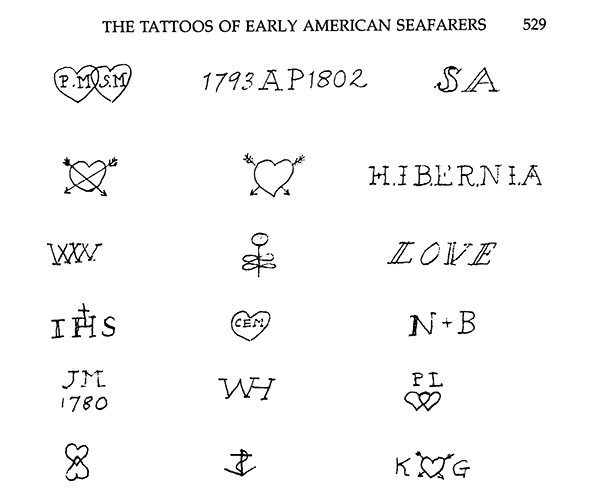 Western culture. I remember a trend some years ago of getting Chinese characters tattooed without many people even knowing or speaking the language. (I used to wonder how people weren’t scared they were lied to about what their tattoo said!) And many modern designs in Western culture have originated from those early sailors’ tattoos in the 1700s and 1800s. However, many have not, and where some celebrities like Dwayne “The Rock” Johnson express Samoan heritage through tattoos, others like Mike Tyson who is not of Maori descent has a ta moko design on his face (See this article on a history of tattooing in the U.S. by Sara Etherton). (Image from Visual log of tattoos seen on sailors in a survey done in 1809. (Ira Dye, “The Tattoos of Early American Seafarers, 1796-1818,” Proceedings of the American Philosophical Society 133, no. 4 [1989]: 520-554. accessed here).
Western culture. I remember a trend some years ago of getting Chinese characters tattooed without many people even knowing or speaking the language. (I used to wonder how people weren’t scared they were lied to about what their tattoo said!) And many modern designs in Western culture have originated from those early sailors’ tattoos in the 1700s and 1800s. However, many have not, and where some celebrities like Dwayne “The Rock” Johnson express Samoan heritage through tattoos, others like Mike Tyson who is not of Maori descent has a ta moko design on his face (See this article on a history of tattooing in the U.S. by Sara Etherton). (Image from Visual log of tattoos seen on sailors in a survey done in 1809. (Ira Dye, “The Tattoos of Early American Seafarers, 1796-1818,” Proceedings of the American Philosophical Society 133, no. 4 [1989]: 520-554. accessed here).
I have two tattoos. The first commemorates a flower I have a cultural connection with as well as a number, a colour, and some simples values; the second commemorates an insect I have a cultural and personal connection with. I got them both with close friends at the time during important moments in my life to mark endings/beginnings. Their placement is interesting – one on my right hip, and one on my left foot. I trust the intuition of those choices. I don’t notice them much anymore, they just feel like part of the fabric of me, and I’m thankful that though I got them when I was young, I still appreciate their presence on my body, and I have no need to be buried in a Jewish cemetery anyway.
Exercise: Reflect on any tattoos you have (or have considered getting). How do you feel about them – their aesthetic, meaning, and history? Is there anywhere you would or would not get a tattoo? Do you resonate with the idea that they connect you with your Creator or that they imprint onto your soul?
![]() If you value this content, please engage in reciprocity by living, sharing and giving.
If you value this content, please engage in reciprocity by living, sharing and giving.
Birth as Ceremony
Blog by Valerie, following recent presentations with breastfeeding and pregnancy groups
We do ceremonies at important moments in our lives, such as weddings, graduations, and funerals. Ceremonies support us to gain knowledge, purify our spirits, and honour life. They can be as simple as a small act done with sacred intention, or as elaborate as a religious confirmation.
“In traditional practices and rituals, birthing involved more than the physical health of the mother and baby. Giving birth was a process of initiation and belonging to the culture that created spiritual links to the land and the ancestral Dreaming.”—Best, O., & Fredericks, B. (Eds.). (2021). Yatdjuligin: Aboriginal and Torres Strait Islander nursing and midwifery care. Cambridge University Press.
The birthing journey, from pregnancy to postpartum it is seen in Indigenous science as a time of spiritual initiation for the new mother. Initiations are transitional ceremonies that lead us through Earth’s cycle from life to death and rebirth into a new identity. For first time mothers, this journey is a profound shift from being a maiden into be-coming a mother, and for all mothers it is a journey of be-coming a mother within a new relationship.
Initiation ceremonies have three phases:
- Separation from daily reality;
- Ordeal or trauma; and
- Return or rebirth.
 In an Indigenous worldview, the mother is seen as a conduit between the spiritual and physical worlds, and birthing trauma as a meaningful initiation into spiritual adulthood. In fact, many Indigenous cultures have initiation rites only for young men, because childbirth (as a birthing mother, through miscarriage, and/or through supporting birthing women) is considered to be the initiation process naturally built into women’s bodies. (Image: Natural Birth Art Print by Sean Frosali, Society6)
In an Indigenous worldview, the mother is seen as a conduit between the spiritual and physical worlds, and birthing trauma as a meaningful initiation into spiritual adulthood. In fact, many Indigenous cultures have initiation rites only for young men, because childbirth (as a birthing mother, through miscarriage, and/or through supporting birthing women) is considered to be the initiation process naturally built into women’s bodies. (Image: Natural Birth Art Print by Sean Frosali, Society6)
Phase 1: Separation from daily reality – being pregnant
The moment a woman is pregnant, she and everyone she meets is in ceremony…The womb is our first orientation on Earth.–Patricia Gonzalez, Red Medicine: Traditional Indigenous rites of birthing and healing
During pregnancy, traditional ceremonies are based on:
-
- Mothers and elders sharing wisdom about birthing, breastfeeding and childrearing;
- Cleansing the mother’s space, including her body and home (i.e. massage, smudging);
- Community support with certain tasks around the house for the mother;
- Taboos and norms about foods, drinks, and activities a mother ought to do or avoid;
- Honouring the babies’ soul entering the womb and protecting the mother and baby (i.e. with amulets, prayers, and rituals, and avoiding aspects of life such as funerals);
- Helping to welcome and support a new baby (i.e. to ease a first time mother’s anxiety, baby showers).
 There are of course many cultural variations on such ceremonies. One example is in parts of India where there is a sort of baby shower called a Valaikaapu in which the mother-to-be is sung to by other women, adorned with bangles, soothed from anxiety with herbal treatment on her hands and feet, and fed traditional nourishing foods. After this ceremony in the third trimester, the mother-to-be traditionally stays at her parents’ house until the baby is born. Another example occurs in parts of Indonesia also begins in the third trimester with the mothers’ parents bringing food to their son-in-law’s family, and the mother ceremonially feeding her pregnant daughter before everyone else eats. The parents-to-be are then given blessings and encouragement by both the whole family, including being wrapped in traditional fabric as a symbol of strength for their union through the birthing journey (Silaban, I., & Sibarani, R. (2021). The tradition of Mambosuri Toba Batak traditional ceremony for a pregnant woman with seven months gestational age for women’s physical and mental health. Gaceta Sanitaria, 35, S558-S560.). (Image from here)
There are of course many cultural variations on such ceremonies. One example is in parts of India where there is a sort of baby shower called a Valaikaapu in which the mother-to-be is sung to by other women, adorned with bangles, soothed from anxiety with herbal treatment on her hands and feet, and fed traditional nourishing foods. After this ceremony in the third trimester, the mother-to-be traditionally stays at her parents’ house until the baby is born. Another example occurs in parts of Indonesia also begins in the third trimester with the mothers’ parents bringing food to their son-in-law’s family, and the mother ceremonially feeding her pregnant daughter before everyone else eats. The parents-to-be are then given blessings and encouragement by both the whole family, including being wrapped in traditional fabric as a symbol of strength for their union through the birthing journey (Silaban, I., & Sibarani, R. (2021). The tradition of Mambosuri Toba Batak traditional ceremony for a pregnant woman with seven months gestational age for women’s physical and mental health. Gaceta Sanitaria, 35, S558-S560.). (Image from here)
Phase 2: Trauma/ordeal – birthing
In the Mohawk language, one word for midwife…describes that “she’s pulling the baby out of the Earth,” out of the water, or a dark wet place. It is full of ecological context. We know from our traditional teachings that the waters of the earth and the waters of our bodies are the same.
—Rachel Olson, Indigenous Birth as Ceremony and a Human Right
During and immediately following birth, traditional ceremonies are based on:
-
- Birthing sites in sacred spaces indoors (e.g. sweat lodges) and outdoors (e.g. natural pools);
- Taboos about labour being quiet or loud, and women’s positions (e.g. squatting);
- Norms about partners being present at birth, or having their own tasks to do for the baby;
- Use of traditional herbal steams and poultices to cleanse the womb, stop bleeding, and help milk start flowing following the birth;
- Protecting the baby and mother;
- Umbilical cord ceremonial clamping and/or saving, or lotus birthing;
- Sensual imprinting for the newborn through wrapping them in traditional clothing, jewellery, fur, and/or blankets; and
- Body wrapping and womb re-warming practices for the mother after birth.
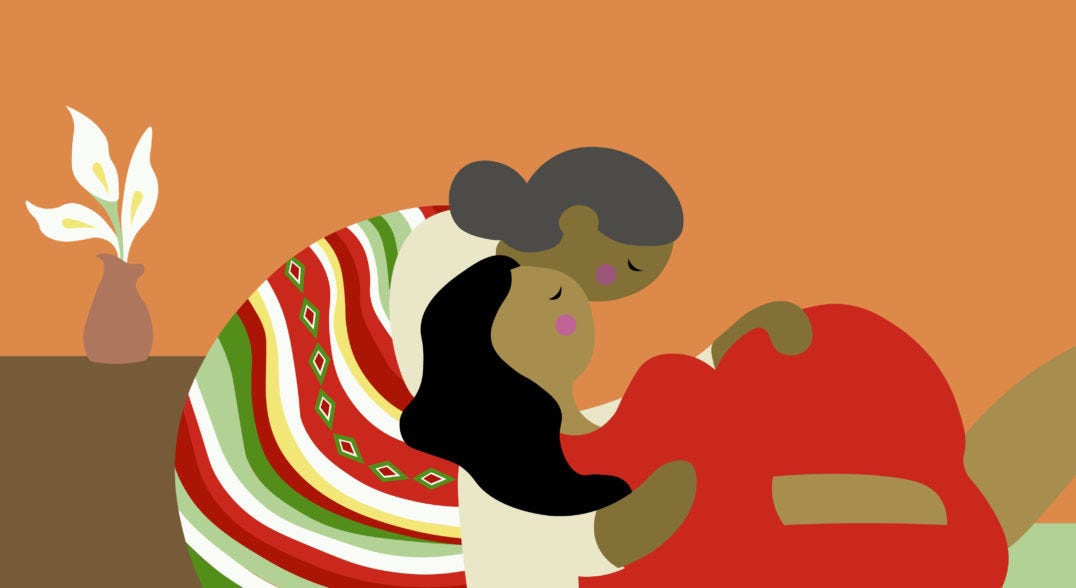 There are also many cultural variations for these ceremonies. For example, in Japan umbilical cords are saved and presented to new mothers in keepsake wooden boxes at hospitals. This tradition is meant to keep a good relationship between the mother and baby, and sometimes the box is given to the adult child when they leave home or marry to symbolise a separation in an adult-to-adult relationship. In Australian Aboriginal cultures, cultural birthing areas utilised natural depressions and sacred spaces such as rock formations, caves and water holes, to spiritually connect the child to their Country and their ancestors. Women followed ‘Grandmother’s Law’ which often included practices such as squatting over the steam of traditional medicinal plants after birth to prevent infection, how to name the child, and when the child would meet their father (Adams, K., Faulkhead, S., Standfield, R., & Atkinson, P. (2018). Challenging the colonisation of birth: Koori women’s birthing knowledge and practice. Women and Birth, 31(2), 81-88). (Image from here)
There are also many cultural variations for these ceremonies. For example, in Japan umbilical cords are saved and presented to new mothers in keepsake wooden boxes at hospitals. This tradition is meant to keep a good relationship between the mother and baby, and sometimes the box is given to the adult child when they leave home or marry to symbolise a separation in an adult-to-adult relationship. In Australian Aboriginal cultures, cultural birthing areas utilised natural depressions and sacred spaces such as rock formations, caves and water holes, to spiritually connect the child to their Country and their ancestors. Women followed ‘Grandmother’s Law’ which often included practices such as squatting over the steam of traditional medicinal plants after birth to prevent infection, how to name the child, and when the child would meet their father (Adams, K., Faulkhead, S., Standfield, R., & Atkinson, P. (2018). Challenging the colonisation of birth: Koori women’s birthing knowledge and practice. Women and Birth, 31(2), 81-88). (Image from here)
Phase 3: Return/rebirth – becoming a mother
We believe in waiting until 30 days after the birth for any celebrations. In our tradition, we believe that the unborn child has a guardian angel, who is the previous mother of the child. If we celebrate the pregnancy publicly, the spirit of the previous parent might come and reclaim her child — so that the new mother loses her baby!—Vietnamese grandmother quoted in Cusk, R. (2014). A Life’s Work. Faber & Faber.
In the postnatal months, traditional ceremonies are based on:
-
- Protecting the baby and mother;
- Naming and welcoming the baby to the land and family;
- Building the newborn’s resilience with elements and weather;
- “Firsts” (i.e. baths, foods, laughs, rolling over, walking, etc.);
- Mother’s rest and recovery from birth (often 40 days); and
- Placenta ceremonies.
 A sweet example of such a ceremony comes from the Navajo/Diné people of North America have a ceremony to honour the babies’ first laugh, and the person who gets the baby to laugh throws a party where guests are given salt on the baby’s behalf as a symbol of generosity since it was traditionally valuable and hard to get (Brown, Shane. (2021). Why Navajos Celebrate the First Laugh of a Baby. https://navajotraditionalteachings.com/blogs/news/why-navajos-celebrate-the-first-laugh-of-a-baby). Across the world in Egypt, on the child’s seventh day after birth, a Sebou’ ceremony welcomes the baby with a number of traditions related to the cultural meaning of the number seven, such as placing the baby in a sieve and shaking them to symbolise life becoming more dynamic outside the womb, then stepping over them seven times saying prayers for protection and obedience to their parents; a candlelit procession of smudging the house; and a drink to increase breast milk production (Gamal, A. (2015). The Sebou‘: An Egyptian Baby Shower, https://www.madamasr.com/en/2015/11/02/panorama/u/the-sebou-an-egyptian-baby-shower/). And in Nordic countries, babies are traditionally left to nap outside no matter the weather to build their resilience to the earthly elements. Called friluftsliv it translates to ‘open-air life’ and represents cultural importance of enjoying nature and the outdoors all year round (McGurk, L. (2023). Creating a stronger family culture through ‘friluftsliv’, Children’s Nature Network, https://www.childrenandnature.org/resources/creating-a-stronger-family-culture-through-friluftsliv/). (Image by Joey Nash)
A sweet example of such a ceremony comes from the Navajo/Diné people of North America have a ceremony to honour the babies’ first laugh, and the person who gets the baby to laugh throws a party where guests are given salt on the baby’s behalf as a symbol of generosity since it was traditionally valuable and hard to get (Brown, Shane. (2021). Why Navajos Celebrate the First Laugh of a Baby. https://navajotraditionalteachings.com/blogs/news/why-navajos-celebrate-the-first-laugh-of-a-baby). Across the world in Egypt, on the child’s seventh day after birth, a Sebou’ ceremony welcomes the baby with a number of traditions related to the cultural meaning of the number seven, such as placing the baby in a sieve and shaking them to symbolise life becoming more dynamic outside the womb, then stepping over them seven times saying prayers for protection and obedience to their parents; a candlelit procession of smudging the house; and a drink to increase breast milk production (Gamal, A. (2015). The Sebou‘: An Egyptian Baby Shower, https://www.madamasr.com/en/2015/11/02/panorama/u/the-sebou-an-egyptian-baby-shower/). And in Nordic countries, babies are traditionally left to nap outside no matter the weather to build their resilience to the earthly elements. Called friluftsliv it translates to ‘open-air life’ and represents cultural importance of enjoying nature and the outdoors all year round (McGurk, L. (2023). Creating a stronger family culture through ‘friluftsliv’, Children’s Nature Network, https://www.childrenandnature.org/resources/creating-a-stronger-family-culture-through-friluftsliv/). (Image by Joey Nash)
 Placental ceremonies are based on traditional understandings of the placenta as a spiritual twin, a baby’s guardian angel, a ‘death’ gift offered to the Earth to give thanks for a healthy baby, and a carrier of a holographic imprint for the baby’s life on Earth. Most cultures bury the placenta (a few even give it funeral rites), some burn or eat it, and a few do lotus births (where the placenta stays attached to the baby until it dries out and falls off). The Hmong people in Laos believe a person’s spirit will wander the Earth and not be able to join their ancestors in the spirit world without returning to the place their placenta was buried and collecting it, and the word for placenta in their language translates as ‘jacket’ (https://en.wikipedia.org/wiki/Hmong_women_and_childbirth_practices). In Maori language in New Zealand, ‘whenua’ is the word for both ‘land’ and ‘placenta’, and after childbirth the placenta is buried on ancestral lands to strengthen a child’s connection to culture, often beneath a tree (Soteria. (2020). Māoritanga: Pregnancy, Labour and Birth. https://soteria.co.nz/birth-preparation/maori-birthing-tikanga/). Placentas are dried and eaten to support the mothers’ or baby’s strength in many places, from China to Jamaica to Argentina (https://en.wikipedia.org/wiki/Human_placentophagy).
Placental ceremonies are based on traditional understandings of the placenta as a spiritual twin, a baby’s guardian angel, a ‘death’ gift offered to the Earth to give thanks for a healthy baby, and a carrier of a holographic imprint for the baby’s life on Earth. Most cultures bury the placenta (a few even give it funeral rites), some burn or eat it, and a few do lotus births (where the placenta stays attached to the baby until it dries out and falls off). The Hmong people in Laos believe a person’s spirit will wander the Earth and not be able to join their ancestors in the spirit world without returning to the place their placenta was buried and collecting it, and the word for placenta in their language translates as ‘jacket’ (https://en.wikipedia.org/wiki/Hmong_women_and_childbirth_practices). In Maori language in New Zealand, ‘whenua’ is the word for both ‘land’ and ‘placenta’, and after childbirth the placenta is buried on ancestral lands to strengthen a child’s connection to culture, often beneath a tree (Soteria. (2020). Māoritanga: Pregnancy, Labour and Birth. https://soteria.co.nz/birth-preparation/maori-birthing-tikanga/). Placentas are dried and eaten to support the mothers’ or baby’s strength in many places, from China to Jamaica to Argentina (https://en.wikipedia.org/wiki/Human_placentophagy).
Today, it might be hard to decide what to do if you don’t know your Indigenous roots and their cultural traditions, and when because many of us birth in hospitals. I suggest relying on your intuition, and what resonates with you. Some ceremonies common across cultures that you may wish to do for yourself and your baby may relate to:
-
- Prenatal blessings to keep the mother and baby safe;
- Connecting the baby to the land and elements (earth, air, fire, water);
- Postnatal rituals to keep the mother and baby safe;
- Placenta burial; and/or a
- Naming ritual.
Keep in mind that you can’t do a ceremony wrong if your heart and intention are in it. The way you feel during and after the ceremony will show you how it went. For my child, we did a prenatal baby shower/blessing with friends and family in person and on Zoom, and we printed out the blessings for our home-birthing space, then ultimately buried them with the placenta a few months after the birth. We chose our baby’s first sensual experiences – sight, smell, touch, and hearing, as her first taste was breastmilk! We brought earth inside to touch to her feet to connect her to the land as she was born in winter, and her placenta burial ceremony was on land where her great-great-great grandmother was buried.
I hope this has given you some things to reflect on and ideas for celebrating your journey into be-coming a mother in a way that feels sacred and special to you and your family. (Two other blogs you may find interesting about my birth and early mothering experiences are: about spirit babies, and mothering amidst intergenerational trauma).
![]() If you value this content, please engage in reciprocity by living, sharing and giving.
If you value this content, please engage in reciprocity by living, sharing and giving.
On “The Voice to Parliament”
Blog by Lukas
(For non-Australian readers, there will be a national referendum later this year on changing the Constitution to add a First Nations ‘Voice to Parliament’ as an advisory body to the federal government, without official powers. “This is part of a reconciliation process that’s been running for decades. A key moment came at a historic meeting of First Nations people from across the country at the First Nations’ National Constitutional Convention in 2017. As many as 250 Indigenous delegates met at Uluru and, after days of discussions, reached a consensus on a 440-word statement, now known at the Uluru Statement from the Heart. It has three key objectives:
1.Voice to Parliament
2.Treaty
3.Truth-telling” (quoted from this article)
The Constitutional amendment proposed would read:
“In recognition of Aboriginal and Torres Strait Islander peoples as the First Peoples of Australia:
1.There shall be a body, to be called the Aboriginal and Torres Strait Islander Voice;
2.The Aboriginal and Torres Strait Islander Voice may make representations to the Parliament and the Executive Government of the Commonwealth on matters relating to Aboriginal and Torres Strait Islander peoples;
3.The Parliament shall, subject to this Constitution, have power to make laws with respect to matters relating to the Aboriginal and Torres Strait Islander Voice, including its composition, functions, powers and procedures.” (quoted from this article)
Lukas’s take on the issue is below. Enjoy!)
Why I’m voting Yes in three points
Whatever we think of the practicalities and politics of The Voice referendum, we can’t afford to ignore it. If nothing else, something important and volatile is brewing at the energetic and psychic level. This goes for all Aussies, but in particularly for Aboriginal people and Anglo-Celtic Australians, the two main protagonists in the often dark recent history of this land. (Image from here)
We can’t know whether this volatility will lead us down a healing or an even darker path, or both. But as with most things, I believe a ‘sunlight’ attitude will help. We need to bring our deepest thoughts and feelings to the surface and into the cleansing light of the sun. This process may well take the form of great explosions of suffering that scatter our former selves across the land like rubble. But I can’t help but envision a gentler path even if sometimes this destruction feels inevitable and necessary.
1. The Uluru Statement
Of course it doesn’t represent every Aboriginal and Torres Strait Islander person. But the Uluru Statement feels like a truer reflection of Indigenous governance, both practically and energetically, than anything that has come before. It is clear in asking for the Voice. I feel a responsibility to respect this request with humility for what I don’t know or understand.
2. We need more forums for intimate relationship building, community dialogue, and consensus.
A Voice for Aboriginal people doesn’t have to be an outlier that further cleaves this nation’s people in two. It can be the first step on the road to more direct democracy, representation and community dialogue for lots of different groups and topics.
We should never accept our imperfect representative democracy as the best we can do.

We should never put efficiency of decision making above our deepest human need for connection and meaning.
We should do our best to avoid reducing groups of people to abstract and remote objects, whether we’re talking about “Aboriginal people”, the “homeless” or anyone else. (Image from here)
Even with the best of intentions, it is very hard to do justice to the complexity of a whole person when working from a distance. Think about how many people a local Federal member is supposed to represent and what that means both practically and spiritually. Now compare that to the complex, intimate and place-based (grounded) kinship structures, law and lore of pre-colonial Australia and how they created one of the most peaceful societies in human history. We need to start the process of going back in this direction. For all of us.
3. Incremental change and visions of radical change must coexist without always knowing how they will meet.
On a deep existential level I don’t believe in this nation state called Australia. However pure the intentions of its notions of liberal justice and freedom, I see these as ideas grafted onto a spiritual and physical superstructure that was and is hierarchical, controlling and exploitative. It is still a colony. See my dialogue with Valerie on settler trauma for more detailed thoughts on this.
I see most people, especially wealthy Anglo-“white”-Australians, living in ignorance of these truths. A bribe of material prosperity and a degree of self-determination most embodied by the illusion of land “ownership” serves to anaesthetise and hide deeper longings and knowings, and the sense that we’re exploited and controlled. It’s like the matrix.
The higher up the hierarchy you are, the more physical comforts (on deeper levels there’s nothing comfortable about this way of being), with those below serving as a warning as to what will happen to you if you stray off script. There is a strong argument to be made that the very idea of “race” was created with this in mind. (See Roots Deeper than Whiteness, Seeing White podcast, Healing whiteness trauma blog).
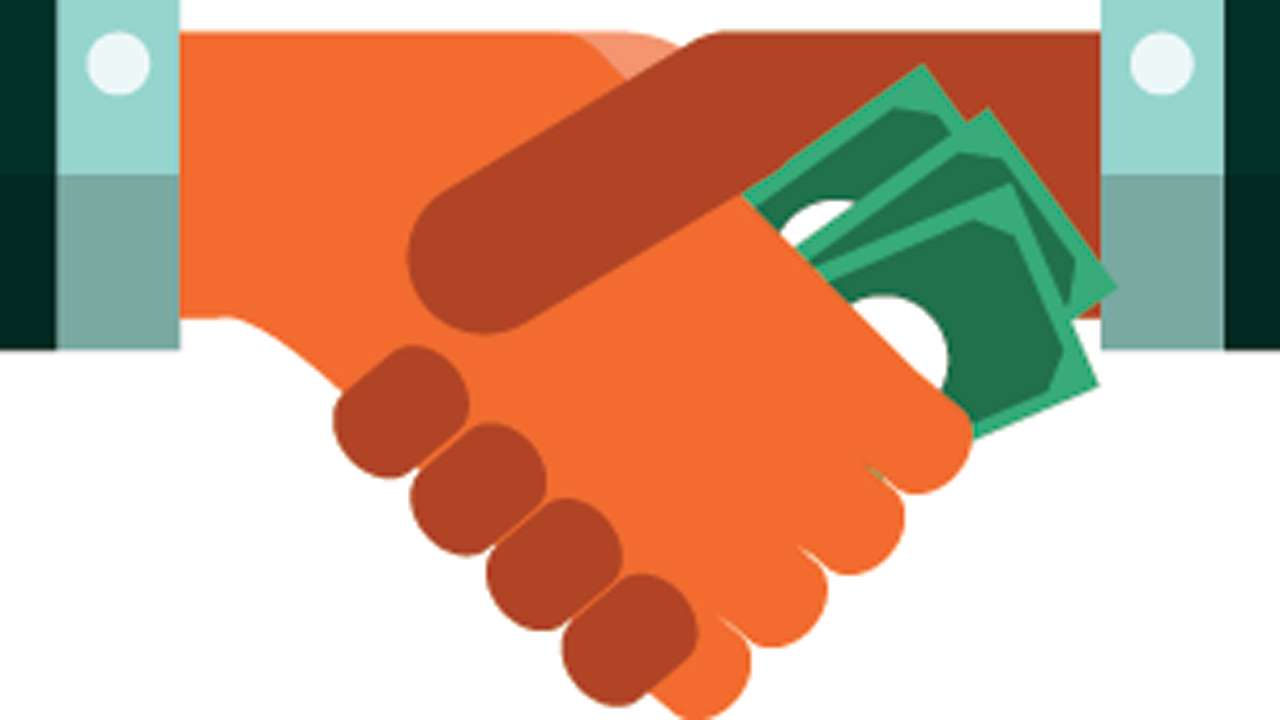 For much of the history of colonial Australia, Aboriginal Australians weren’t even offered the bribe. This is slowly changing, but for most part the structures and systems are still too racist, controlling, individualistic and devoid of spirit. They insist that Aboriginal people forgo their communal rights to land, their sovereignty. The bribe doesn’t work. The conservative “no” campaign might as well say: “Don’t worry, give it time, we can eventually bribe most of them and the rest we can safely oppress. As a society we’re experts at this.” (Image from here)
For much of the history of colonial Australia, Aboriginal Australians weren’t even offered the bribe. This is slowly changing, but for most part the structures and systems are still too racist, controlling, individualistic and devoid of spirit. They insist that Aboriginal people forgo their communal rights to land, their sovereignty. The bribe doesn’t work. The conservative “no” campaign might as well say: “Don’t worry, give it time, we can eventually bribe most of them and the rest we can safely oppress. As a society we’re experts at this.” (Image from here)
Having said all this, one might ask why should we keep investing in these toxic structures and systems, most embodied by the Australian nation state? Shouldn’t we just boycott and undermine them, and settle for nothing less than radical change? For some Aboriginal Australians, Lidia Thorpe for example, this might mean settling for nothing less than treaty and restoration of full sovereignty. Good luck to her I suppose.
But I don’t think many of us are ready for statelessness, me included. We’re all too traumatised by hierarchy, top-down power and control, and our severance from Country, both practically and spiritually.
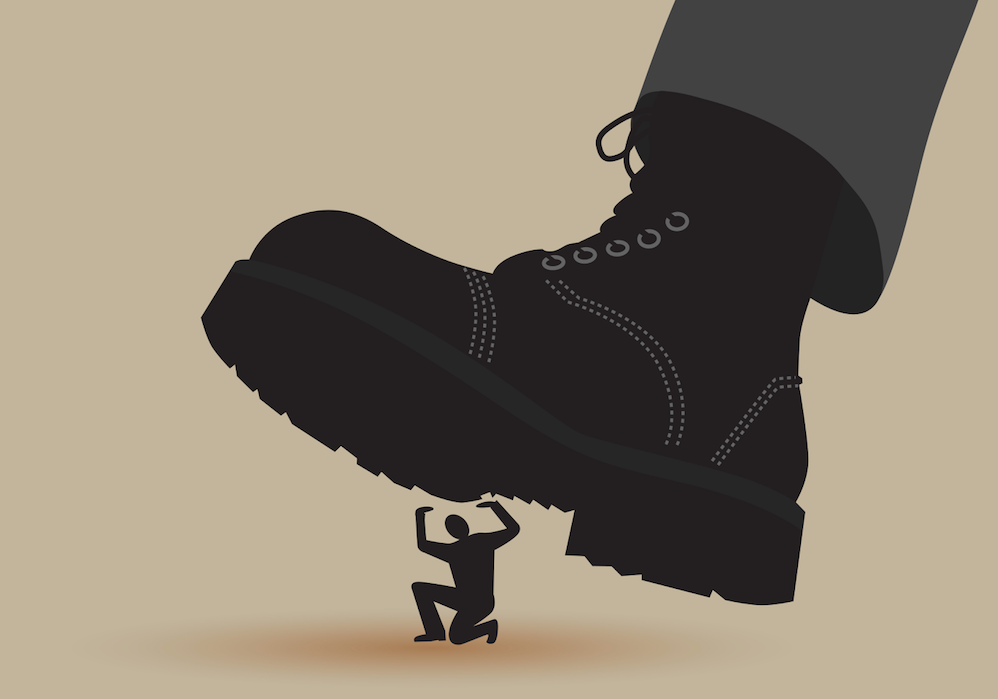 Given what we’ve lost as far as knowledge of more intimate and communal governance structures, relationship to Country and self-sufficiency, I believe we need to work on growing and healing these aspects of ourselves whilst chipping away at rather than attempting wholesale revolution and rebellion from the structures and systems of the state. We must keep pushing the boot off our throats whilst never losing sight of a radical vision of change. (Image from here)
Given what we’ve lost as far as knowledge of more intimate and communal governance structures, relationship to Country and self-sufficiency, I believe we need to work on growing and healing these aspects of ourselves whilst chipping away at rather than attempting wholesale revolution and rebellion from the structures and systems of the state. We must keep pushing the boot off our throats whilst never losing sight of a radical vision of change. (Image from here)
For people down the bottom of the hierarchy, this might mean very physically focused work concentrating on the way the system denies them basic care and sustenance. For those of us higher up the power hierarchy, it might mean more work in the mental and spiritual realms, and as much renunciation from numbing comforts as we can handle without egocentric martyrdom.
In other words, we must manipulate the system into letting us sow the seeds of something better.
On a daily level I try to do this for my social work clients and community, as well as for myself. An increase in Job Seeker (welfare payments), or more public housing, or a grant for a new men’s shed, despite coming from an oppressive system, has the potential to increase our short-term wellbeing and give us space to consider what we really want and vision something more. This is even if, or perhaps even ESPECIALLY if, we don’t know how the here and now and our greater vision will connect.
To be flippant about incremental improvement in all its forms risks condescending to a lot of hard work, whether your own or the work of others.
Embodied in The Voice, I see a generational moment. For many of the Elders who authored the Uluru Statement, I suspect their relationship with the Australian state has been so dire as to make incremental change all they could hope for. Perhaps they didn’t even dare dream. And now there may well be light at the end of the tunnel, and maybe the Aboriginal community and all of us can have bigger dreams. But in many ways, I think it is built on the opportunity that all of this incremental improvement has afforded, paltry as it may seem when viewed through the prism of matrices like the Closing the Gap indicators or revolution. Perhaps this request is a big part of the legacy of the hard work and resilience of these Elders?

The space between our immediate day to day struggles and our bigger dreams and visions is perhaps the most dangerous for a human mind. It is where we trick ourselves the most, it’s where we obsess and grind, and lose our faith.
Will a new way of making representations to the Australian government really improve things for Aboriginal people? We can’t know. But it feels like a step, a step made positive the more we get behind it. (Image from here)
![]() If you value this content, please engage in reciprocity by living, sharing and giving.
If you value this content, please engage in reciprocity by living, sharing and giving.
Mothering amidst intergenerational trauma
Blog by Valerie
 ‘We are cycles of time’ stuck in my head after reading a Chinese astrological perspective on the lunar new year before bed. I couldn’t sleep, and my seven month old has been struggling before bed recently too, getting a burst of energy after indicating she’s sleepy. Though neither of us knows quite how to best help her settle, we’re getting there.
‘We are cycles of time’ stuck in my head after reading a Chinese astrological perspective on the lunar new year before bed. I couldn’t sleep, and my seven month old has been struggling before bed recently too, getting a burst of energy after indicating she’s sleepy. Though neither of us knows quite how to best help her settle, we’re getting there.
I knew in my pregnancy that my nervous system was overloaded. I spent the first few months exhausted and unable to get out of bed, processing a load of grief, only some of which felt like mine. I felt the absence of my mother, grandmothers and wise aunties in a deeper way then. I lost them all to trauma. No one in my family has accepted that I was sexually abused, because no one can handle their own triggers and emotions around that being true. Their paths of denial have, from my perspective, all been painful and tragic.
My dad died from a repeat bout of cancer soon after I told his whole family that one of theirs was my abuser. One grandmother had multiple nervous system disorders, the other lived under such oppression that her back was curved into a C shape from the weight of what she carried on her shoulders. My mother increasingly took so many psychiatric pills to numb her pain that she could no longer be human with me.
Professionally I have done restorative justice with survivors of clergy sex abuse and clergy of integrity who wish to take responsibility on behalf of the Church. I have also chosen to heal some of my own child sex abuse trauma by doing empathic dialogues with sex offenders and their family members as research, to understand their experiences and therefore see my own in a new light. I’ve worked in child welfare and domestic violence, in developed and developing countries.
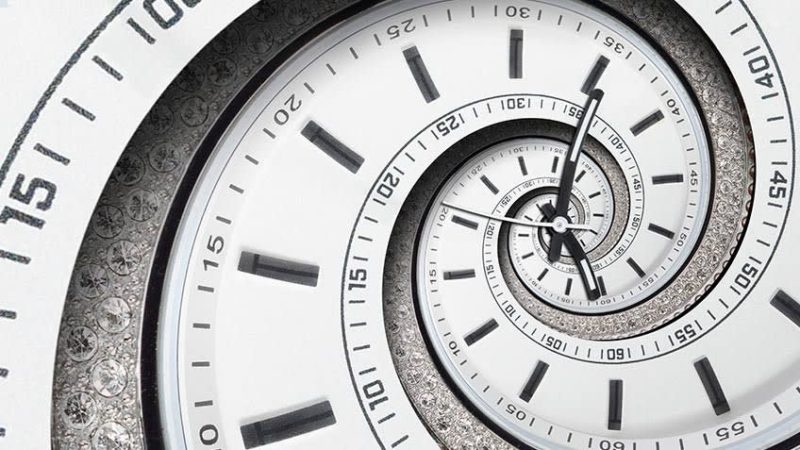 So it’s fair to say that I have seen plenty of intergenerational trauma playing out in mine and other people’s lives. It’s particularly humbling to see it play out now, as a mother with my baby. But once I realize that’s what’s happening, I know we will have to ride this cycle of time out. And I feel grateful all the trauma I inherited and grew up with led me to learning how to work with that tough, powerful energy. (Image from here)
So it’s fair to say that I have seen plenty of intergenerational trauma playing out in mine and other people’s lives. It’s particularly humbling to see it play out now, as a mother with my baby. But once I realize that’s what’s happening, I know we will have to ride this cycle of time out. And I feel grateful all the trauma I inherited and grew up with led me to learning how to work with that tough, powerful energy. (Image from here)
Before feeling ready to become a parent, I worked hard over many years to process trauma and heal, to live differently than I was raised. I know from my PhD on indigenous trauma healing that altering consciousness is an important part of healing. And I still meditate throughout the day, with my baby, often when she’s feeding and sleeping on me. I know that I’m not in control of the triggers, and that working with the land to ground my memories eases my load.
This past weekend our landlords, who did some work to baby proof the house we’re renting, shocked us by giving us notice, saying they don’t feel like they can keep our baby safe on their property, and they’re scared about liability should something happen to her. I had no such fear here. We’re living rurally, and both my partner and I grew up in big cities.
This felt like a bait and switch and really surprised me, because as a mother keeping my baby safe is primarily my responsibility. I had just finished baby proofing the house and setting up safe play areas for her to crawl, buying some carpet and even paying to get the floors super clean and ready for the baby to scoot around on.
I didn’t sleep well for a few nights after the notice, wondering if we did something wrong, why this is happening, though the landlords said they have no complaints about us. And then it hit me. My first recovered memory of child sex abuse was my uncle and his wife touching me in a baby bath. I must’ve been about the age my daughter is now. And our landlords seem to be, for reasons of their own that I don’t know, playing out some of this fear and rejection energy with us.
We all attract what we need to grow and heal. Looking through mother’s eyes I’ve been finding it increasingly harder to relate to my family’s choices in caring for me. It’s hard to need support and know not only that they can’t help me, but that I need support because I now have the responsibility of both processing the trauma I carry from my childhood and inheritance, as well as trying to show up differently for my baby.
Childbirth was a clear example of this struggle for me. We planned a home birth with the support of a local doula and a virtual midwife who was on call for us during the birth. She also helped us prepare, mostly emotionally and mentally. I had done birth regression healing previously, yet ninety percent of what I experienced in childbirth was witnessing my own birth and my mother’s lack of consciousness and connection with me – not my connection with my baby, though I could feel their presence and had a knowing that she was okay.
 I have felt a lot of grief that so much of my energy in the pregnancy and birth, and even as a young mother now, is about processing trauma and grief instead of just being in the moment enjoying my baby. Though I feel nervous about looking for housing, packing and moving, I realize we’re all a cycle in time. And though it’s tough, my role now is to process as much trauma and ground as much nervous energy as I can so my baby has more opportunity to be present with their child in the next cycle.
I have felt a lot of grief that so much of my energy in the pregnancy and birth, and even as a young mother now, is about processing trauma and grief instead of just being in the moment enjoying my baby. Though I feel nervous about looking for housing, packing and moving, I realize we’re all a cycle in time. And though it’s tough, my role now is to process as much trauma and ground as much nervous energy as I can so my baby has more opportunity to be present with their child in the next cycle.
Reflecting on these cycles, I remember that the article about Chinese astrology said that the last year of the water rabbit was 1963, when Dr. Martin Luther King Jr. made his famous I Have a Dream speech. I grew up in Atlanta, and he’s long been a hero to me. Yet this lunar new year cycle started with a lot of violence at it’s celebrations in California, and among African Americans in Memphis, the city where Dr. King was killed.
Intergenerational trauma plays out in so many layers. And we’re all in this together. I’m reminded of other wise words from Dr. King:
“If a man is called to be a street sweeper, he should sweep streets even as a Michaelangelo painted, or Beethoven composed music or Shakespeare wrote poetry. He should sweep streets so well that all the hosts of heaven and earth will pause to say, ‘Here lived a great street sweeper who did his job well.”
I’m holding steady as best I can, bringing compassion, grounding, and unconditional love and acceptance to all the trauma that shows up. And I hope one day when she’s a parent, my baby feels that I swept our street well and gave them tools to survive these trauma cycles of time.
![]() If you value this content, please engage in reciprocity by living, sharing and giving.
If you value this content, please engage in reciprocity by living, sharing and giving.
Unconscious Sorcery
Blog by Valerie
Often the term ‘sorcery’ is used negatively, but any manifestation of a spirited, emotive thought or prayer can be considered sorcery. As Shaman Chiron Armand says:
“[T]he word sorcery implies control one wields or seeks to wield over life, spirits, or other incarnate beings. That one might be capable of wielding force that yields great consequences in the subtle realms without intending to or even knowing one has collapses the all-too-neat answers that magic and sorcery hand us [about] human agency.”
To answer this, Shaman Christina Pratt says, “The distinction between acts of healing and acts of [negative] sorcery is self-control.” She gives the following examples of “everyday manipulations and unconscious abuses of power that are effectively unconscious sorcery”: telling a child they are stupid, an MD telling a patient they have 6 weeks to live, manipulating a situation for a desired outcome, and blaming others for our pain, and reminds us that “unconscious though this sorcery may be, it is still harmful.” And I would add that spiritually we have some responsibility, and ought to act on that once we become consciously aware.
 I bring this up because I find unconscious sorcery very common. I recently got to the root of a painful thought loop that’s informed my whole life and was quite surprised to find that it wasn’t intergenerational trauma as I expected, but in fact (I’m assuming unconscious) negative sorcery from a former big shot professor who had it in for my mother. I did hear stories growing up about how he had bullied her, like how when she was pregnant with me and asked for afternoon classes due to morning sickness, he gave her 8am classes instead. The belief he cursed me with was “you don’t belong here”. And I do feel it was directed at me, maybe even more than my mother, because he took great issue with a young mother having an academic career. And I made her into a mother.
I bring this up because I find unconscious sorcery very common. I recently got to the root of a painful thought loop that’s informed my whole life and was quite surprised to find that it wasn’t intergenerational trauma as I expected, but in fact (I’m assuming unconscious) negative sorcery from a former big shot professor who had it in for my mother. I did hear stories growing up about how he had bullied her, like how when she was pregnant with me and asked for afternoon classes due to morning sickness, he gave her 8am classes instead. The belief he cursed me with was “you don’t belong here”. And I do feel it was directed at me, maybe even more than my mother, because he took great issue with a young mother having an academic career. And I made her into a mother.
When you think about curses from negative sorcery, you may think about a more tribal culture. Like a cave Lukas and I were shown in Guatemala where people hired sorcerers to send blessings and curses using different colored candles and incantations. Just going near that cave got us sick, the energy was so intense. But what a curse I’ve lived with all these years because of a mean spirited wish turned into action from an old man. For me the issue is the spirit we bring to things more than self control. That man would have been aware he was angry with my mother, and that his behaviour was hurting her, if not aware of the impact of his psychic attacks. If my mother had been in more integrity she might’ve been protected from his curse, or might’ve become aware of it sooner. Her own conflict and insecurity about being a working mother likely allowed it into my formative psyche.
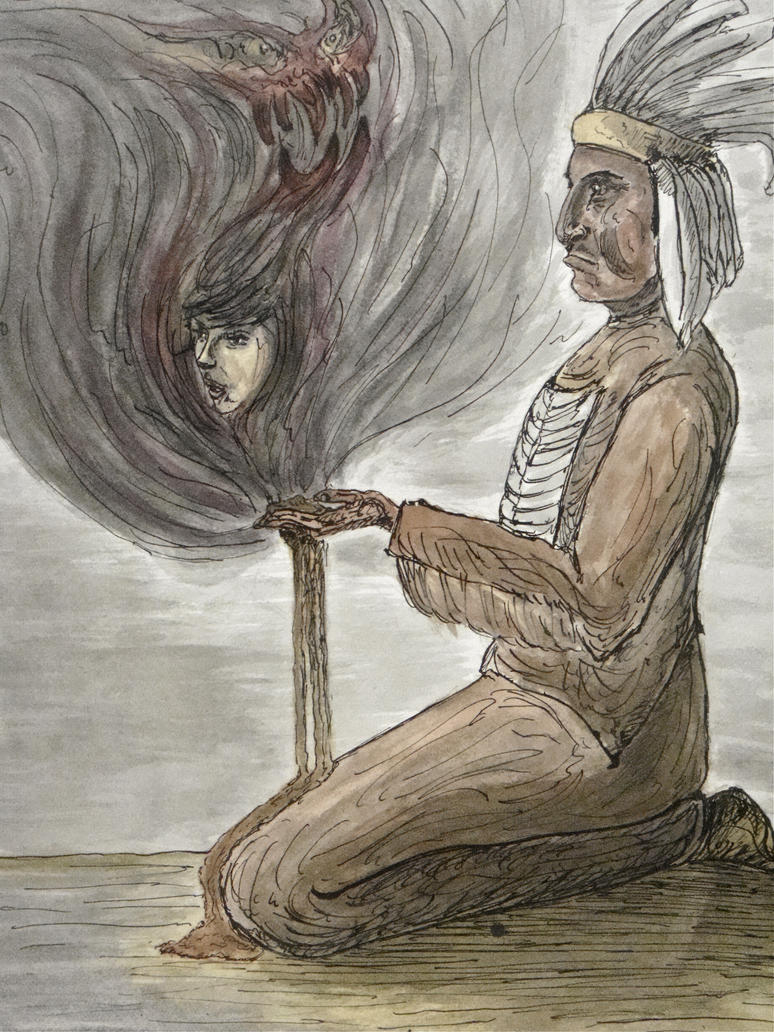 That was his hook. But what about me? As Shaman Chiron Armand explains: “In some instances, such forceful projection by the unconscious sorcerer can lead to displacement of the projected-upon’s internal Self, especially in young children, the habitually marginalized, and those lacking firmly rooted identities, leading to soul theft.” And his curse really did affect my identity in such a way. Each of you reading this likely had something said to you in childhood that affected you greatly that you’re aware of. At some point such things tend to become self fulfilling and we embody them, living the curse (or blessing). I say blessing because unconscious sorcery needn’t be negative in intent to have an impact. For example, ‘you’re a leader’ may have been projected onto a privileged young Anglo man so many times, he has learnt to use that energy and embody it, confidently working his way up in a company, taking risks others wouldn’t dream of. And the more he does, the more people project onto him that he’s a leader, and reinforce that blessing more positive form of unconscious sorcery. (Image entitled Curse of the Wendigo Part 1 from here)
That was his hook. But what about me? As Shaman Chiron Armand explains: “In some instances, such forceful projection by the unconscious sorcerer can lead to displacement of the projected-upon’s internal Self, especially in young children, the habitually marginalized, and those lacking firmly rooted identities, leading to soul theft.” And his curse really did affect my identity in such a way. Each of you reading this likely had something said to you in childhood that affected you greatly that you’re aware of. At some point such things tend to become self fulfilling and we embody them, living the curse (or blessing). I say blessing because unconscious sorcery needn’t be negative in intent to have an impact. For example, ‘you’re a leader’ may have been projected onto a privileged young Anglo man so many times, he has learnt to use that energy and embody it, confidently working his way up in a company, taking risks others wouldn’t dream of. And the more he does, the more people project onto him that he’s a leader, and reinforce that blessing more positive form of unconscious sorcery. (Image entitled Curse of the Wendigo Part 1 from here)
Now you can argue he’s actually been cursed to live out a life that may not be ideal for him, or consciously what he’d choose if he was more self aware. You can also argue that by constantly feeling I didn’t belong wherever I was, that helped spur my inward healing journey so it was a blessing. The point of this writing, though, is to show that the impact of unconscious sorcery is based largely on the spirit or intent of the energy. And my view of that we are responsible for our energy, which includes acts of unconscious sorcery. Being more self aware improves our ability to use our energy, our power, wisely and with integrity. (FYI a previous post on soul theft/wetiko/windingo is here.) So the next time you’re angry at a politician and notice yourself sending them daggered thoughts laced with negative emotion, or find yourself verbally ranting about them, stop and ask yourself how you’re using your power, and if you really intend to be cursing them. Cause what we do to others we invite into our own lives! And if you think you have been cursed, feel free to contact me or someone you trust with shamanic skills for help.
So the next time you’re angry at a politician and notice yourself sending them daggered thoughts laced with negative emotion, or find yourself verbally ranting about them, stop and ask yourself how you’re using your power, and if you really intend to be cursing them. Cause what we do to others we invite into our own lives! And if you think you have been cursed, feel free to contact me or someone you trust with shamanic skills for help.
![]() If you value this content, please engage in reciprocity by living, sharing and giving.
If you value this content, please engage in reciprocity by living, sharing and giving.
What is Indigenous spirituality?
Blog by Valerie
A friend brought this question to me, and I thought it a good one to take on. For some, being ‘spiritual’ is like the U.S. Supreme Court decision about porn – ‘I know it when I see it’. For some it’s intertwined with religious rites. For me, spirit is an animating energy exhibited through an act or a relational dynamic that connects all of us beings on Earth. For example, the spirit of my relationship with my daughter is characterised by a lot of joy, and the spirit of my relationship with my dog is primarily one of companionship. Spirituality is cultural, and mine is Indigenous, based on an animistic understanding of the world. I see all beings on Earth, including rocks and even manmade plastic toys, as having spirit, some kind of animating energy.
 (Typical image of ‘spirituality’ from here)
(Typical image of ‘spirituality’ from here)
Spirit with a capital S to me refers to a big creative and destructive energy that is more than any identity I can hold, of which I am a small part. Some say Great Spirit, some say God. Spirits plural to me refers to beings that I see in dreams or visions, or experience through the four invisible clair-senses (clairvoyance – seeing, clairsentience – feeling, clairaudience – hearing, claircognisance – knowing – described by Diné Elder Wally Brown as the counterparts to our five physical senses represented by our five fingers and the four spaces between them.)
So if this is what spiritual, Spirit, and spirits mean to me, what does it mean to ‘be spiritual’? First, it means acknowledging some energies/forces/beings that are too vast to be encompassed by an individual, or even our collective, human identity. Second, it means openness and awareness of the invisible clair-senses, and to experiences that are not explainable, or sometimes even experienceable, in materialist, physical terms.
My view is that children naturally see the world in an animistic way, and that through teachings begin to close their mind (and obscure their clair-senses) to other inputs. Recently a four year old asked me to read her a story about werewolves, then asked me if they were real. I said, I don’t know, what do you think? Have you seen one before? But her mother quickly jumped in to say that no, they’re not real. Of course she is entitled to teach her daughter that and presumably she believes that to be true. I have not personally encountered a werewolf in my dreams or visions (or the material world) but I tend to think that if such beings loom large in our collective human psyche, and even across cultures, that there is likely something to it.
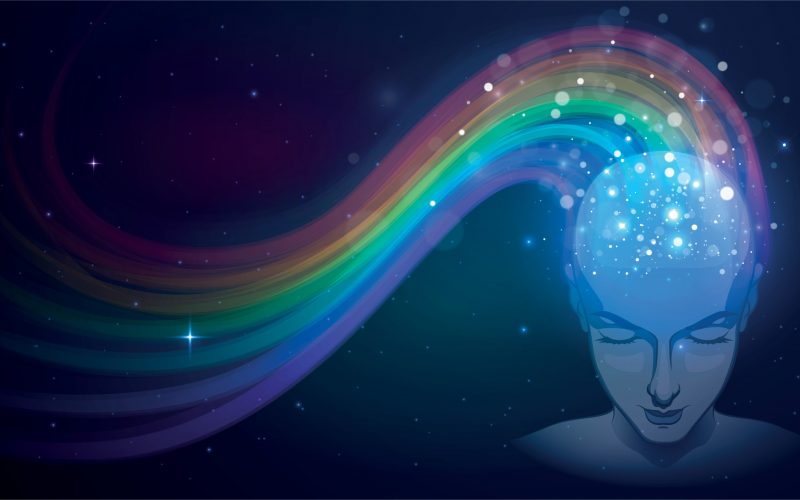 How do we know the difference between a spiritual experience and our imagination? I have seen a lot of people struggle with this – with their minds tricking them into thinking they have encountered a Spirit, for example. For me the difference is in embodiment. And when in doubt, see if and how changes occur in your everyday life as a result of the insight or guidance you got. (Image from here)
How do we know the difference between a spiritual experience and our imagination? I have seen a lot of people struggle with this – with their minds tricking them into thinking they have encountered a Spirit, for example. For me the difference is in embodiment. And when in doubt, see if and how changes occur in your everyday life as a result of the insight or guidance you got. (Image from here)
That spiritual experiences are grounded in the land and embodied in everyday life is a foundation of Indigenous spirituality. In an Indigenous worldview, an identity is commonly seen as a collection of relational dynamics, including relationships with humans and non-humans. This interdependence is often honoured through totemic relationships and responsibilities to do rituals and ceremonies. If I see my identity and my very existence as tied to the water in a river nearby and the fish in it, then it makes sense to fight for their survival and even put my own life on the line. See this recent example from California regarding the centrality of salmon to Yurok, Karuk, and Hoopa Valley tribes.
This may seem extreme to Westerners, even environmentalists willing to put their lives on the line for Mother Earth, because it’s not just about how humans need water or fish to survive, it’s the particular patch of earth (or sea or sky) and relational responsibilities there that matter to your very existence. If those fish die, you die; there is no supermarket to run to for other food. If you have to leave your land, you may get killed by others when you go onto their lands, or you may die not knowing how to survive there and live in a sustainable healthy way there.
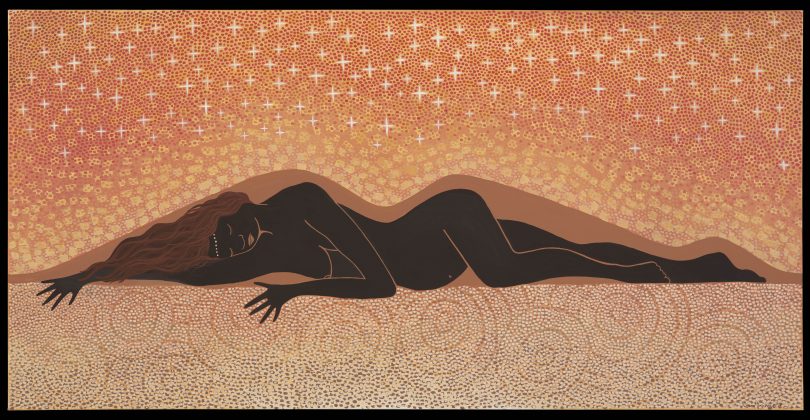
(Art by Cheryl Davison, Yuin woman, of the pregnant mother spirit of Gulaga mountain, protector of the land we are now grateful to call home, from this site)
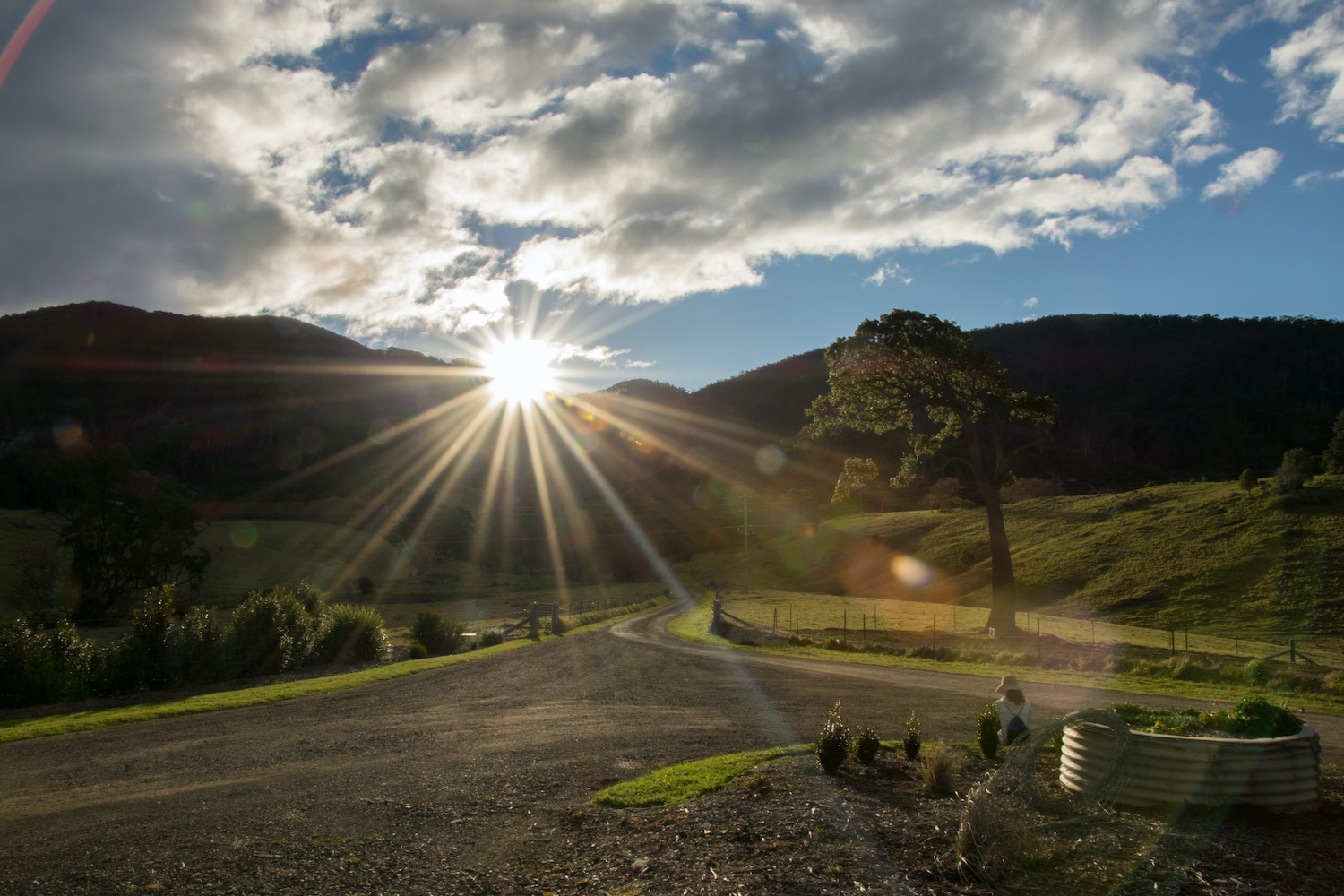
(A photo of me in front of Gulaga taken a few years ago by Lukas before we knew we would be moving onto her country)
Western counsellors talk a lot about attachment theory. Right now when my baby cries (or is about to cry) I feel such pain inside, and such an urge to help her, I have to respond. Imagine feeling pain like that when a sacred site you’re responsible for is threatened with mining, and the urge to prevent it. Imagine the pain when it’s blown up and doesn’t exist in physical form anymore, just spirit and memory. Maybe you don’t need to imagine that – maybe you have tapped into that well of pain most of us are carrying in our ancestral roots. Maybe on your traditional lands, or like me, on lands you are spiritually adopting and feel are adopting you and your family too.
![]() If you value this content, please engage in reciprocity by living, sharing and giving.
If you value this content, please engage in reciprocity by living, sharing and giving.
Embodiment
Blog by Valerie – a final chapter shared from the book that was just written
Being authentic, centred and grounded means having awareness of our core values and doing our best to en-live-en them through our life choices and forms of expression. Embodiment is a recognition of the universality of our connection with all of Creation as well as our individuality of lived experience. It’s important not to confuse lived experience knowledge with intellectual understanding or awareness, often referred to as ‘knowledge’ in Western science. We all have intellectual under-standing and awareness about life experiences we haven’t had; for example, we may say that -10 is cold, but unless we’ve felt it, we don’t have an embodied knowing of how cold that is.
 There is so much power in lived experience that from an Indigenous science perspective, it is the only way we can ‘know’ something. People with a lot Western theoretical or book ‘knowledge’ are often seen as arrogant, or even dangerous. If you’ve learned some ‘evidence-based’ ways to prevent obesity, you will still have a limited ability to empathise with people who have experienced it themselves or witnessed it through an intimate relationship. Knowing our standing, or positionality, makes a huge difference in how well we embody our values and medicine. Our standing refers to placement – socio-politically, culturally, physically, emotionally, mentally, and spiritually. I’ve included socio-politically and culturally because we live in two worlds as Indigenous scientists and need to be aware of our Western political placement as well as Indigenous cultural placement.
There is so much power in lived experience that from an Indigenous science perspective, it is the only way we can ‘know’ something. People with a lot Western theoretical or book ‘knowledge’ are often seen as arrogant, or even dangerous. If you’ve learned some ‘evidence-based’ ways to prevent obesity, you will still have a limited ability to empathise with people who have experienced it themselves or witnessed it through an intimate relationship. Knowing our standing, or positionality, makes a huge difference in how well we embody our values and medicine. Our standing refers to placement – socio-politically, culturally, physically, emotionally, mentally, and spiritually. I’ve included socio-politically and culturally because we live in two worlds as Indigenous scientists and need to be aware of our Western political placement as well as Indigenous cultural placement.
 As an Indigenous scientist living far from ancestral lands, from a socio-political perspective, I am a settler[1] doing my best to be a political ally[2] of Aboriginal peoples of Australia. I can’t experience what’s embodied through their cultural lineages and relationships; they carry a power of intergenerational knowledge that, if shared with me, supports me to build my own relationships with their ancestors and the land where I live (Image from here). Gitksan scientist Dr. Cindy Blackstock explains Indigenous scientific trust in long-tested ancestral wisdom and our collective responsibility for carrying and passing on Indigenous knowledge:
As an Indigenous scientist living far from ancestral lands, from a socio-political perspective, I am a settler[1] doing my best to be a political ally[2] of Aboriginal peoples of Australia. I can’t experience what’s embodied through their cultural lineages and relationships; they carry a power of intergenerational knowledge that, if shared with me, supports me to build my own relationships with their ancestors and the land where I live (Image from here). Gitksan scientist Dr. Cindy Blackstock explains Indigenous scientific trust in long-tested ancestral wisdom and our collective responsibility for carrying and passing on Indigenous knowledge:
As knowledge trustees, whose job it is to understand and relay knowledge which has been passed down by generations before us, we pay great attention to the detail of the knowledge and the values and spirit embedded in it so that we can pass it on. Because knowledge needs to echo across lifetimes and generations, multidimensional standards of rigor are needed to ensure knowledge is understood within the four dimensions of learning: spiritual, emotional, physical and cognitive and that each teaching is situated within an interconnected knowledge web[3].
It’s natural to speak about things we haven’t experienced at times, but it’s wise to do so with humility in recognition of our standing within that interconnected web of life. For without lived experience (which includes knowledge embedded in our bodies through ancestral inheritance), to some extent we are guessing.
Embodied methods for sharing traditional knowledge have helped ensure its efficacy and accuracy over time and prevented the impact of such human limitations from diluting or distorting it. As Dr. Lynne Kelly explains, “At every level of initiation into knowledge there were memory aids…from hand-held objects to art on bark or rocks, to the landscape itself”[4] in addition to songs and stories that were easy to remember yet cleverly layered with knowledge[5]. This is why changing landscapes and moving Indigenous peoples can be severely disorienting and detrimental to cultural integrity.
Exercise: Reflect on embodied memory aids you have – such as objects in your house, photos, places you go, music, etc. Which ones bring you joy? Which ones feel like clutter that could be let go? Are there any that trigger you into trauma or other difficult emotion? If so, do you wish to let them go or ceremonially cleanse them?
It’s helpful to consider that our bodies themselves ‘speak’ stories, with our bones showing how nourished we are, our body’s ergonomic strain, and even our toxin exposure[6]. Our bodies also arouse stories in others. Shona scientist Dr. Virginia Mapedzahama says when she walks into a room she experiences predetermined socio-political space simply because of her Black body[7], whereas Yuin scientist Shannon Field describes awareness of her socio-political privilege since she can pass as White though she is a Blak Aboriginal woman[8].
To further complicate things, many of us have lived experiences that aren’t fully processed. For example, if someone believes that lying makes them a ‘bad person’, they may subconsciously trick themselves and others into believing an altered story that omits a ‘bad’ thing they did. An acute listener will likely experience cognitive dissonance, a sense that the storyteller’s heart and head were in conflict. This highlights the importance of using discernment with shared knowledge, even when it is embodied.
Exercise: Reflect on what spaces embody, such as a school, a park, or a prison. Reflect on what social structures embody, such as a performer and an audience, or a judge sitting higher than the jury, victim, lawyers, or the accused. Reflect in your own life what you embody and what you intentionally wish to.
![]() If you value this content, please engage in reciprocity by living, sharing and giving.
If you value this content, please engage in reciprocity by living, sharing and giving.
[1] For a discussion of the settler role, see Settler trauma dialogue: https://www.youtube.com/watch?v=wj5-MTr78V0&t=3s
[2] For a discussion of embodying Indigenous allyship, see Weaving Knowledges dialogue: https://www.youtube.com/watch?v=N9N7UE7UMqY
[3] Blackstock, C. (2007). The breath of life versus the embodiment of life: Indigenous knowledge and western research. World Indigenous Nations Higher Education Consortium Journal, 4(1), 67-79, p. 68.
[4] Kelly, L. (2015). Knowledge and power in prehistoric societies: Orality, memory, and the transmission of culture. Cambridge University Press, p. xvii.
[5] See e.g. Karl-Erik Svieby & Tex Skuthorpe. (2006.) Treading Lightly: The hidden wisdom of the world’s oldest people. Crows Nest, NSW: Allen & Unwin.
[6] See e.g. Krieger, N. (2005). Embodiment: a conceptual glossary for epidemiology. Journal of Epidemiology & Community Health, 59(5), 350-355. https://jech.bmj.com/content/jech/59/5/350.full.pdf
[7] Navigating whiteness dialogue: https://www.youtube.com/watch?v=sYYN-f5m3YI
[8] Identity politics dialogue: https://www.youtube.com/watch?v=SxIJAARiZLo
